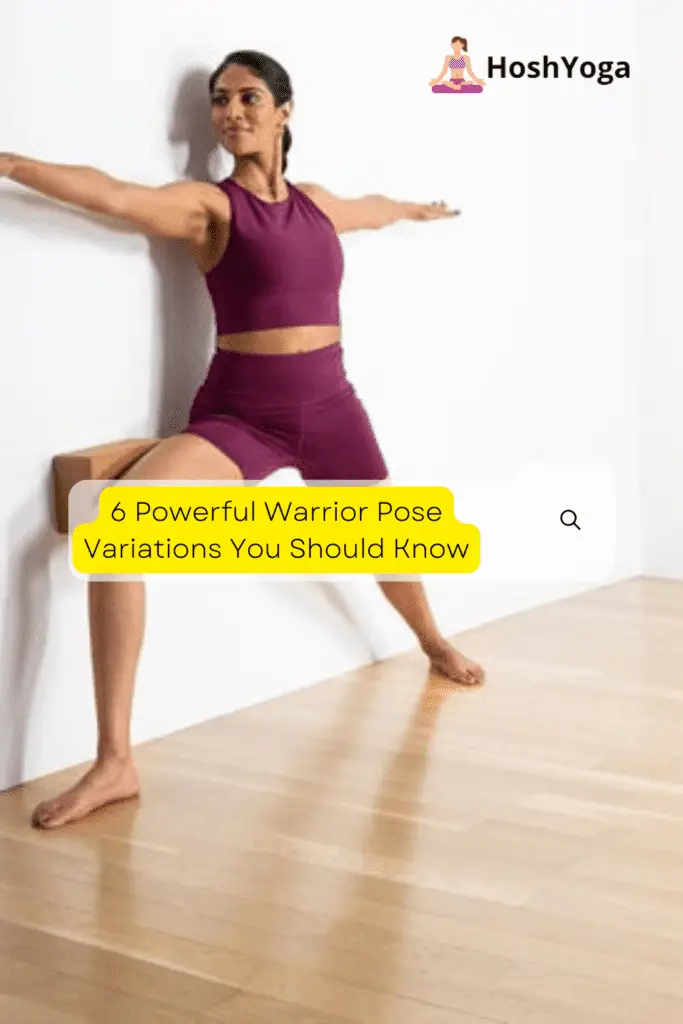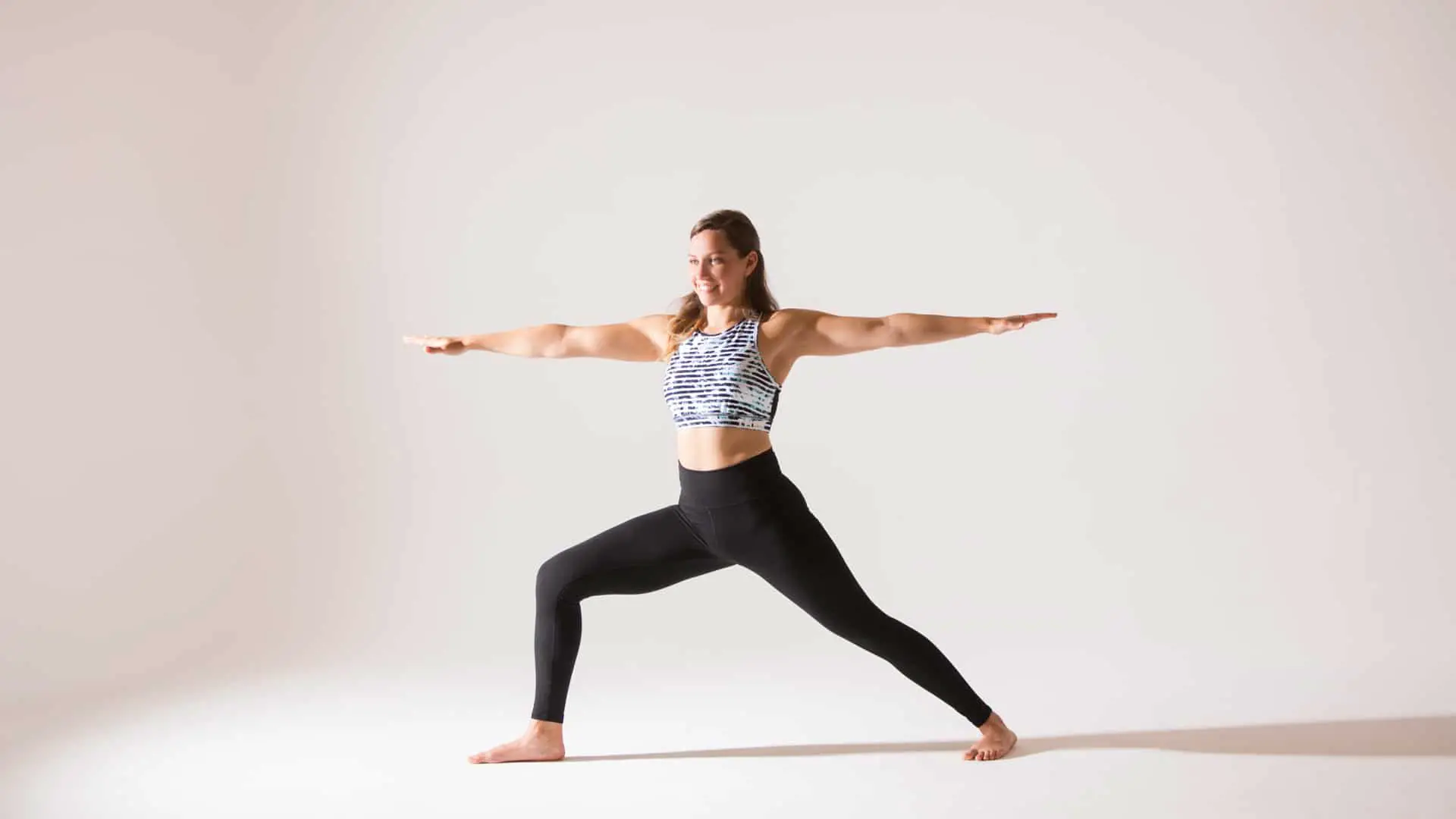Warrior pose is one of the most popular yoga poses, and for a good reason – it offers a wide range of benefits that can help improve your physical and mental well-being. There are several Warrior pose variations that you can try to help enhance your practice.
In this article, we will review the best Warrior pose variations and provide tips on how to get the most out of your yoga session.
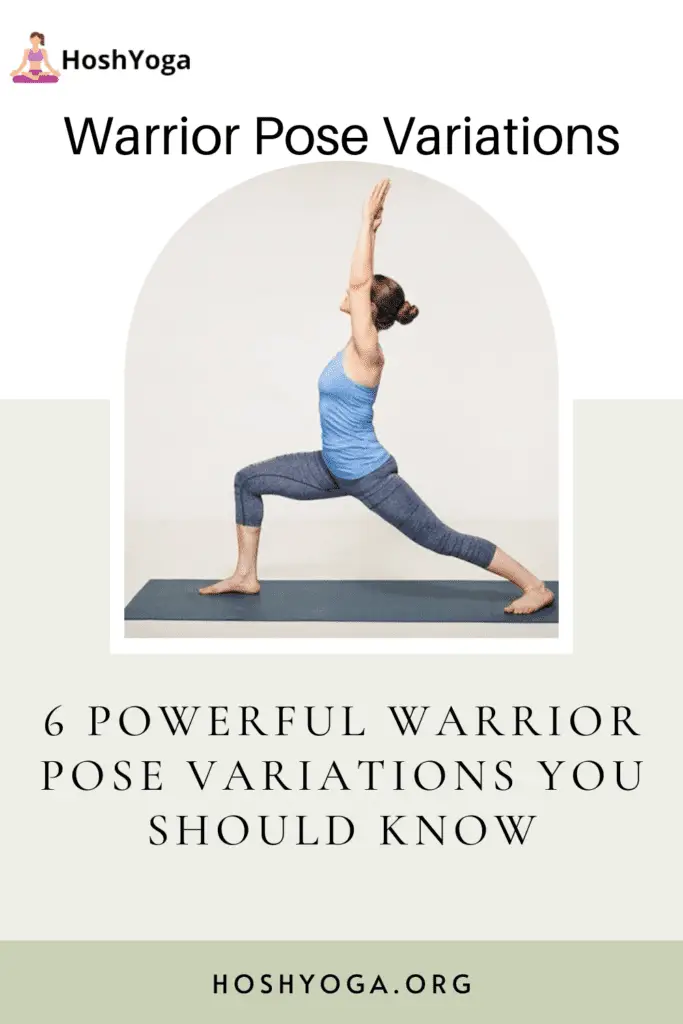
What is the Yoga Warrior Pose?
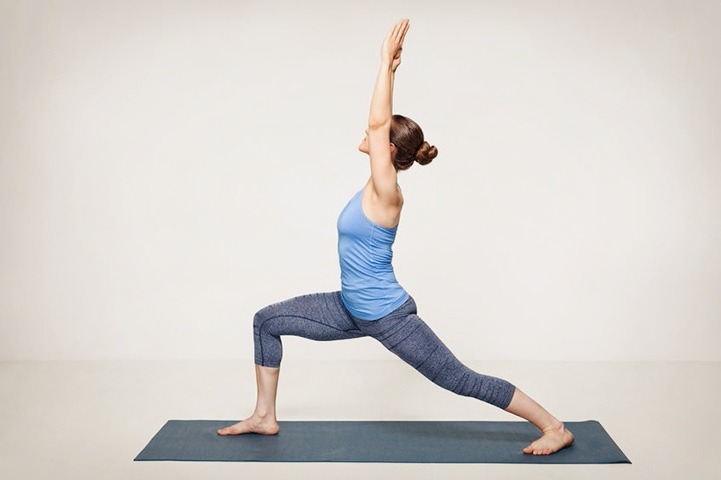
The Yoga Warrior Pose is a powerful and physically demanding pose that combines strength, flexibility, and balance. This pose is often used as a starting point in many yoga classes or routines, as it helps to warm up the body and prepare it for more intense movements.
The Warrior Pose requires that you stand upright with your feet parallel, your arms at your sides, and your hands relaxed. Then, you simply have to lunge forward with one leg while keeping the other bent and firmly rooted on the ground behind you.
From there, you can hold the pose for an extended time before switching legs and repeating the movement on the opposite side. Through steady practice and proper technique, this pose can help to build both strength and flexibility, making it a wonderful addition to any yoga routine.
The Benefits of Warrior Pose
The Warrior pose is one of the most beneficial and relaxing postures in yoga. Known as Virabhadrasana in Sanskrit, the Warrior pose is a powerful stance that opens up the entire body, stretching and toning muscles, ligaments, and tendons.
In addition to promoting physical wellness, the Warrior pose also has many mental benefits. It helps to quiet the mind, reduce stress and anxiety, and improve focus and concentration.
Whether you are a seasoned yogi or just starting out on your practice, the Warrior pose is an excellent posture to include in your routine. And it can help you feel strong, energized, relaxed, and truly present in the moment.
How to Do Warrior I Pose?
To do the Warrior I pose, begin in a standing position with your legs together and your arms by your sides. Next, take a deep breath and step your right foot back until it is about 3-4 feet behind you.
As you extend your leg behind you, bend your left knee at a 90-degree angle to directly over the ankle. At the same time, lift both arms up to shoulder height above your head. Once you have achieved this posture, hold it for about 30 seconds before repeating it on the opposite side.
It is important to keep breathing steadily throughout this exercise and focus on keeping both of your knees aligned with each other at all times. If you are new to the Warrior I pose or want to feel more grounded in the position, try turning your gaze down toward the floor rather than looking up towards the ceiling.
This peaceful yoga pose can help open up your chest and strengthen both your upper body and lower body while increasing flexibility and balance.
6 Warrior Pose Variations for You Try
Along with the classic traditional pose, there are several other Warrior pose variations that can help you achieve your fitness goals. Each of these poses focuses on specific areas of the body to improve strength and flexibility. Let’s go through them all.
Warrior II
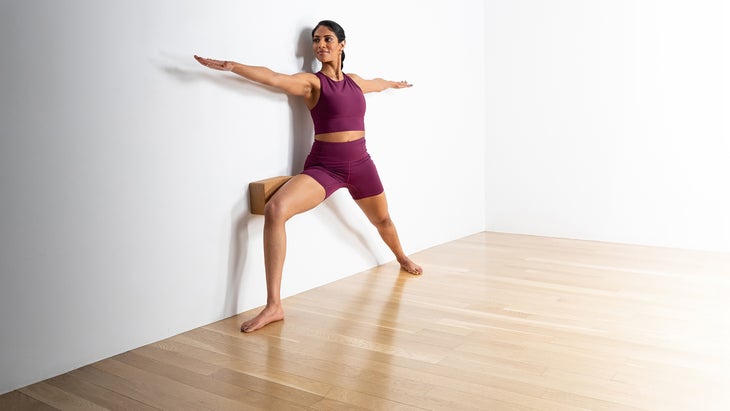
Warrior II is a classic yoga pose that offers a variety of benefits for both the mind and body. This pose helps strengthen and tone the muscles of the thighs, calves, ankles, and the core muscles of the abdomen.
In addition, Warrior II enhances circulation and stimulates the digestive system. It also helps to improve balance and coordination. To achieve this pose, begin standing with your feet about hip-width apart.
Bend your right knee so that it is directly over your right ankle. Turn your right foot out 90 degrees so that your toes are pointing to the right side of the mat. Then, extend your arms out to the sides so that they are parallel to the mat.
Be sure to keep your shoulders down and away from your ears. Gaze over your right hand while you hold this pose for 5-10 breaths. Repeat on the other side.
Warrior III
Warrior III is another Warrior pose variation that offers many benefits. It builds strength in the legs, back, and shoulders and also helps to improve balance and posture. In addition, Warrior III can help to reduce stress and tension and promote concentration and focus. To enter the pose, begin in a standing position with your feet together.
Then, lift your left leg off the ground and extend it behind you. Next, bend forward from your hips, keeping your spine straight. Reach your arms out in front of you as you lower your left leg toward the ground.
Finally, bring your arms overhead and clasp your hands together as you look up toward the sky. Hold the pose for a few deep breaths and up to 30 seconds before returning to standing. As you practice Warrior III, be sure to maintain a deep breath and a strong connection with your core muscles. With regular practice, you will soon experience the full benefits of this powerful yoga pose.

Reverse Warrior
Reverse Warrior is a powerful and beneficial yoga pose that provides an array of physical and mental benefits.
Essentially, this pose involves inverting your body so that the right side of your chest faces forward while the left side remains turned toward the ground. This position stretches and strengthens the muscles in your back, shoulders, hips, and legs while also improving flexibility and posture.
Additionally, Reverse Warrior is thought to help calm the mind by activating areas of the brain associated with feelings of tranquility and relaxation. Regardless of whether you are new to yoga or have been practicing for years, Reverse Warrior is a wonderful pose for anyone who wants to feel physically and mentally rejuvenated.
You will just be amazed at how great you feel after taking some time to practice this powerful pose!
Humble Warrior
The Humble Warrior yoga pose is a foundational pose that helps to engage and strengthen the body’s core muscles.
Start in a standing position with your feet together and hands by your sides to perform this pose. Inhale, and bring your hands up above your head. As you exhale, bend forward at the waist and fold your body into itself, bringing both arms down until they touch the ground.
You can either rest your hands flat on the floor or clasp them together behind you, depending on your level of flexibility. Hold this position for 5 deep breaths, focusing on stretching out tight areas such as the hamstrings and lower back.
When you feel ready to come out of the pose, inhale, straighten your body, and exhale as you return to a standing position. This is one of the greatest Warrior pose variations if you’re looking to deepen your yoga practice and improve your overall strength and flexibility.
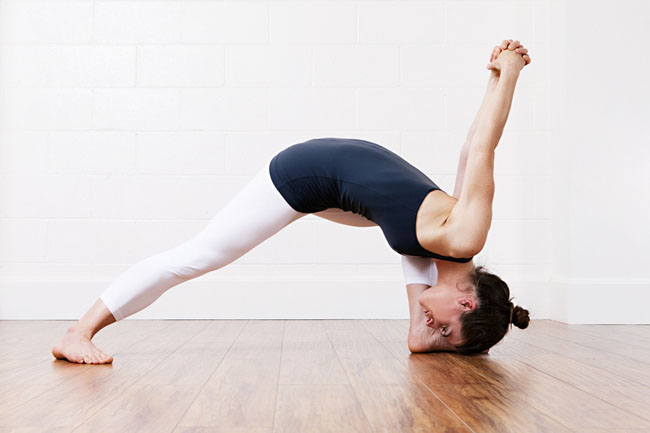
Dancing Warrior
The Dancing Warrior yoga pose is a wonderful way to relax and clear your mind. This pose helps to improve balance and coordination, as well as promote flexibility.
To begin, stand with your feet together, then take a large step forward with your right foot. Bend your right knee and lower your hips until your thigh is parallel to the ground. Raise your arms above your head, then sweep them back and down as you exhale.
Reach forward with your left hand and grasp your right ankle as you inhale. Gently pull your foot towards your body as you lengthen your spine. Hold the pose for a few breaths, then repeat on the other side.
Warrior with Chair
The Warrior with Chair yoga pose is a powerful and unique posture that engages the entire body as well as the mind. In order to practice this pose, you must begin by facing a sturdy chair with your feet together and your arms holding onto the back of the chair.
You must then bend one knee and extend it outward while at the same time reaching the arm on that same side overhead. This creates a strong stretch in the leg and back muscles while also stretching out the chest and shoulders.
In addition to its physical benefits, this pose is also known to be incredibly relaxing and calming for both mind and body, promoting feelings of peace and well-being. So, if you’re looking to challenge your body while nourishing your mind, look no further than Warrior with Chair yoga pose!
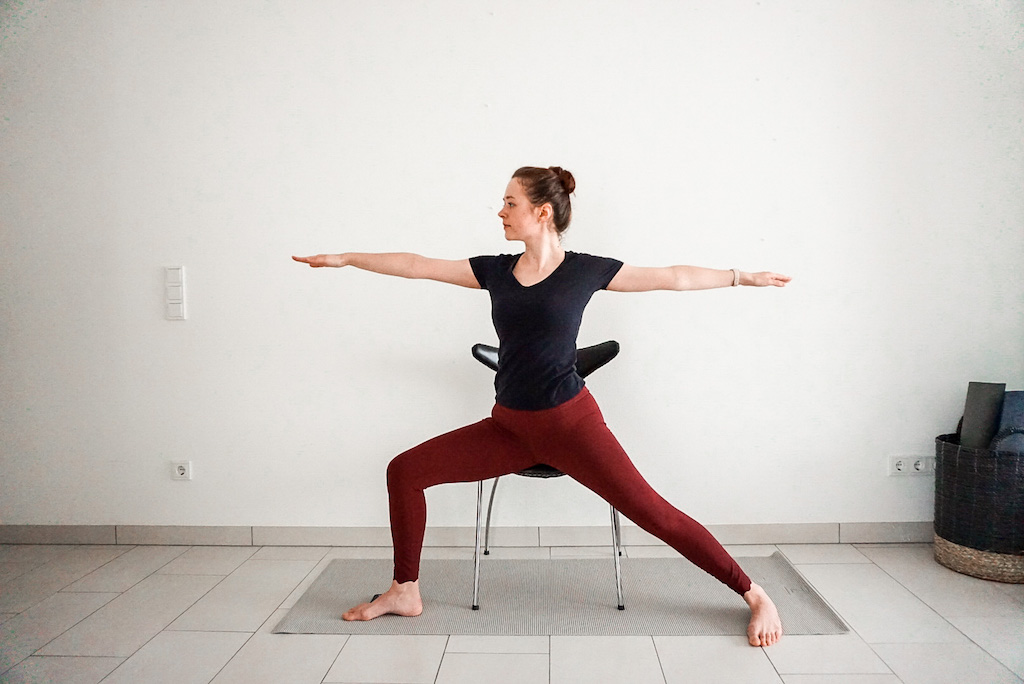
Difference Between Warrior I and Warrior II Poses
The Warrior I and Warrior II poses may appear to be similar at first glance, but there are actually several key differences between the two. For instance, in Warrior I, the front leg is bent at a 90-degree angle, while the back leg is straight.
This creates a deep stretch in the front of the thigh and hip, as well as in the chest and shoulders. Warrior II, on the other hand, has both legs straight, with the front leg turned out at a 45-degree angle.
This position opens up the hips and groin, while also strengthening the ankles, knees, and thighs. In addition, Warrior II provides a deeper stretch for the hamstrings than Warrior I. As a result, these two poses offer distinct advantages for both beginner and experienced yogis alike.
Difference Between Warrior I and Crescent Pose
There are many different yoga poses that can help to improve your flexibility, strength, and balance. Two of the most popular poses are Warrior 1 and Crescent Pose. Both of these poses are excellent for building upper body strength and improving posture. However, there are a few differences to know.
Warrior 1 is a standing pose that requires you to balance one leg while extending the other leg back. You will also need to stretch your arms out to the side in order to maintain balance.
Crescent Pose is a lunge position that also requires you to balance on one leg. However, in this pose, your back leg will be bent rather than straight. You will also need to place your hands on the ground in front of you in order to support your body.
Both Warrior 1 and Crescent Pose are great for toning the legs and buttocks. However, Crescent Pose is more challenging and thus can help to build more muscle. Warrior 1 is a better pose for beginners as it is easier to maintain balance. If you want to build more muscle, try doing a few repetitions of each pose.
How to Do Yoga Safely and Avoid Injury for Beginners?
Learning how to do yoga safely and avoid injury is essential for beginners. If you’re a novice, we recommend Hatha yoga as is a slow-paced, gentle form of yoga that is perfect for beginners. Hatha yoga asanas are also the safest but it’s important to start with basic poses and gradually build up to more difficult ones.
In addition, we suggest using props such as blocks and straps to help you safely achieve the correct alignment. It is also important to listen to your body and not push yourself beyond your limits.
Moreover, just like in a gym workout, you should warm up with basic stretches like shoulder and neck rolls before starting. Of course, take a few deep breaths to get in the mind before your yoga session.
If you feel pain, then stop and rest. By following these simple tips, you will be able to enjoy the many benefits of yoga without putting your health at risk.
Conclusion
Whether you are a seasoned yogi or just starting out in your practice, learning how to do yoga safely and avoid injury is essential.
With proper technique and steady practice, you can enjoy all of the mental and physical benefits that yoga has to offer without putting yourself at risk. So why not give it a try today? Your body and mind will be more relaxed and ready to start the day.
